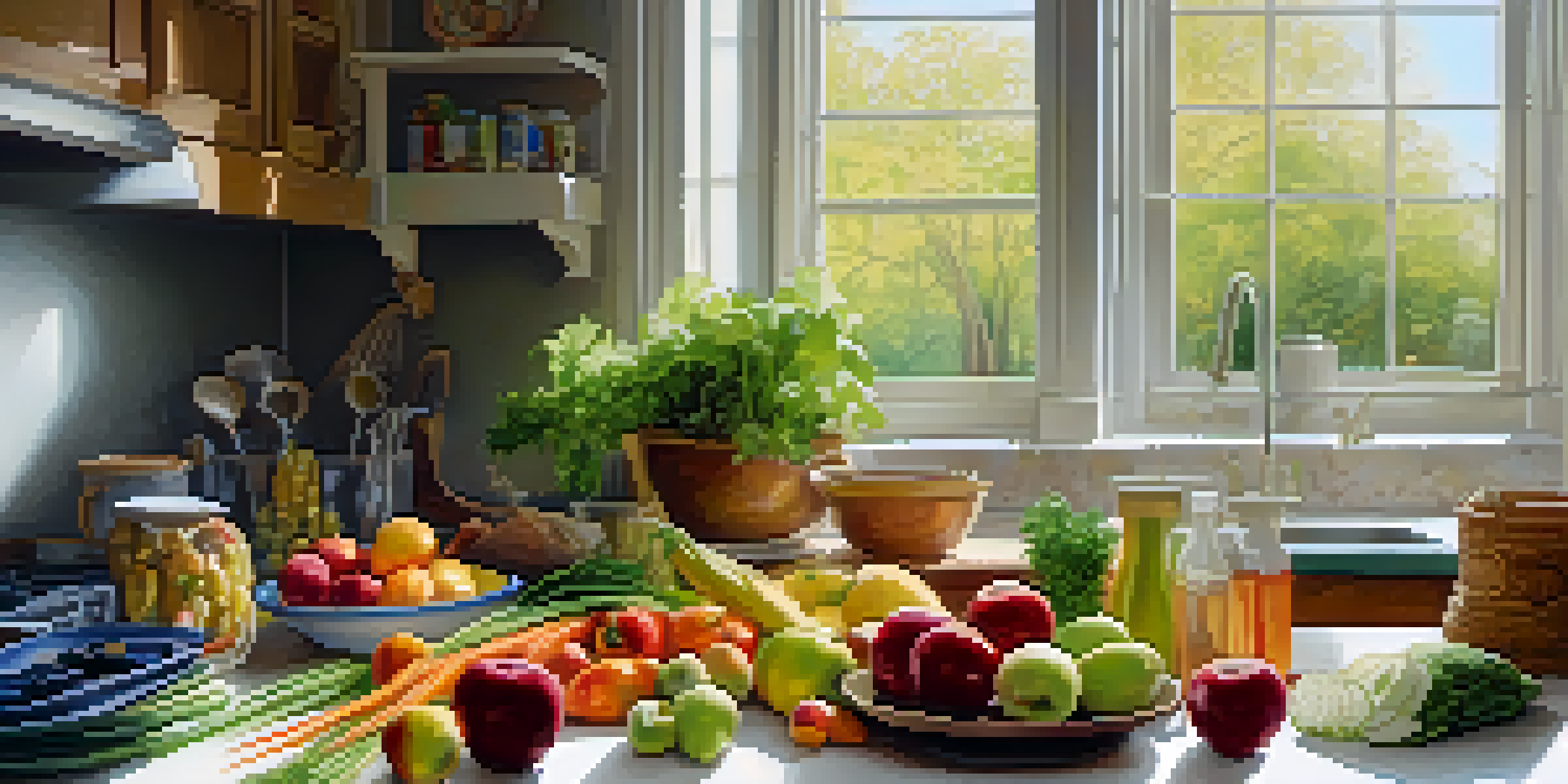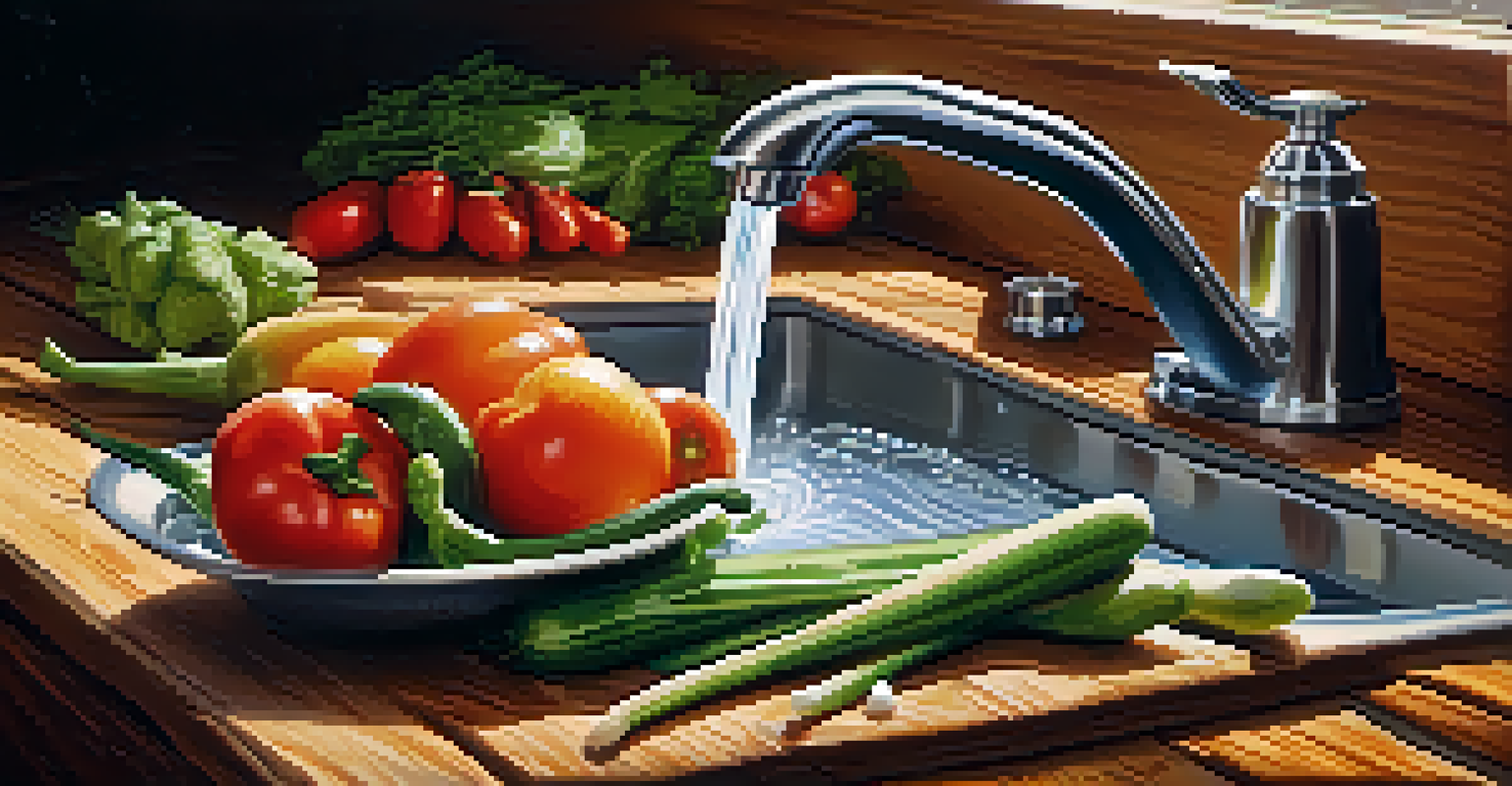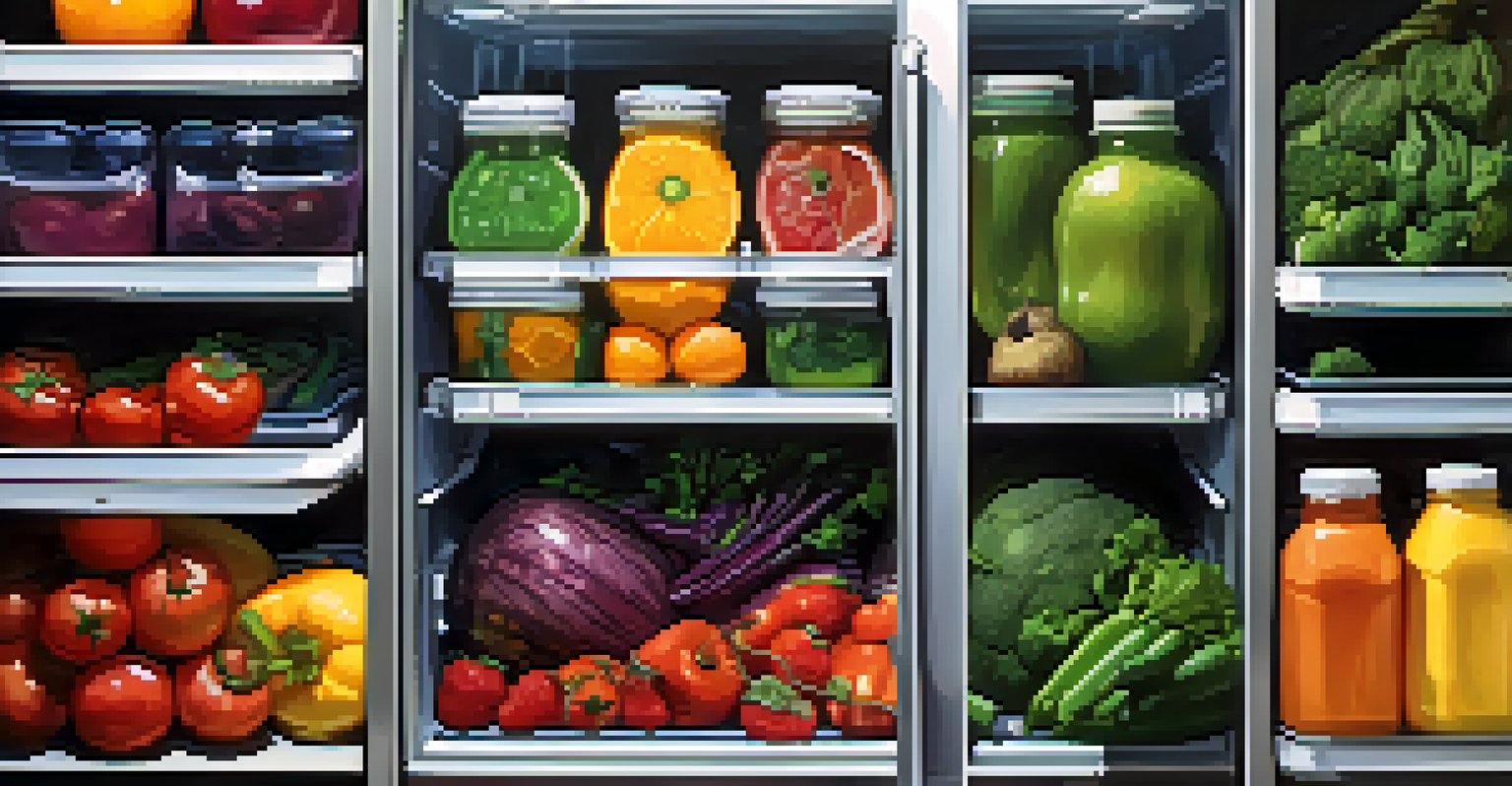Essential Raw Food Safety Tips for Home Preparation

Understanding the Importance of Raw Food Safety
Raw food diets often include fruits, vegetables, nuts, and seeds, which can be incredibly nutritious. However, without proper handling, these foods can harbor harmful bacteria that lead to foodborne illnesses. This is why understanding raw food safety is essential for anyone looking to incorporate more raw ingredients into their meals.
The food you eat can be either the safest and most powerful medicine or the slowest form of poison.
Just like a painter needs a clean canvas, you need a safe environment when preparing raw food. Bacteria thrive in dirty environments, so it's crucial to keep your kitchen clean and organized. Think of it as setting the stage for a successful culinary performance.
By prioritizing safety, you not only protect yourself but also enhance the overall experience of enjoying fresh, wholesome food. After all, the goal is to nourish your body without the worry of potential health risks.
Washing Hands: The First Step in Raw Food Prep
Before you dive into preparing any raw ingredients, washing your hands is a must. Just like you wouldn't start a race without warming up, you shouldn't start cooking without clean hands. This simple act can significantly reduce the risk of contaminating your food.

Use warm water and soap to scrub your hands for at least 20 seconds. Don't forget to clean under your nails and between your fingers, as these areas can harbor bacteria. Think of your hands as your primary kitchen tool; they need to be as clean as possible.
Prioritize Raw Food Safety
Understanding raw food safety is essential to prevent foodborne illnesses while enjoying nutritious ingredients.
After washing, dry your hands with a clean towel or paper towel. This step might seem minor, but it's the foundation of food safety. Remember, a clean slate leads to a delicious outcome!
Choosing Fresh Ingredients for Safety and Quality
When it comes to raw food, the quality of your ingredients matters. Selecting fresh fruits and vegetables not only enhances flavor but also minimizes the risk of contamination. Just like picking the ripest berry from the bush, your choices should reflect the best you can find.
Hygiene is two-thirds of health.
Look for vibrant colors and firm textures when shopping. If an ingredient looks wilted or bruised, it’s best to leave it behind. Think of it as giving your dish a fighting chance against bacteria; fresher ingredients are less likely to carry harmful pathogens.
Additionally, consider buying organic when possible, as these products often have fewer pesticides. Freshness paired with quality creates a winning combination for your raw food dishes, ensuring both safety and taste.
Cleaning Produce: More Than Just a Rinse
Cleaning your produce is a crucial step that goes beyond a quick rinse under water. It's like polishing a gem to reveal its true beauty; you want to ensure your food is spotless. Use a vegetable brush for firmer produce to remove dirt and bacteria effectively.
For leafy greens, consider soaking them in a bowl of water to loosen any debris before rinsing them thoroughly. This method can be particularly effective for getting rid of hidden dirt. Just like you wouldn't wear dirty clothes, you shouldn't eat unclean food.
Choose Fresh Ingredients
Selecting vibrant, fresh produce minimizes contamination risks and enhances the flavor of your raw dishes.
Finally, remember to dry your produce with a clean towel or let it air dry. This step helps remove any remaining bacteria, ensuring your meal is as safe as it is delicious.
Proper Storage Techniques for Raw Foods
Storing raw food properly is essential for maintaining freshness and safety. Think of your fridge as a protective fortress; the way you organize it can keep bacteria at bay. Always store raw fruits and vegetables separately from cooked foods to prevent cross-contamination.
Use airtight containers to keep your ingredients fresh and minimize exposure to bacteria. Consider labeling your items with dates to keep track of freshness, much like a library cataloging its books.
Remember, the temperature matters too! Keeping your fridge at or below 40°F (4°C) helps slow down bacterial growth, ensuring your raw food remains safe and scrumptious.
Understanding Cross-Contamination Risks
Cross-contamination occurs when harmful bacteria spread from one surface or food to another. Think of it as a game of tag, where bacteria can easily jump from raw meat to your fresh vegetables if you're not careful. This is why using separate cutting boards for raw and cooked foods is crucial.
Always use utensils that have been cleaned thoroughly before switching from raw to cooked ingredients. It’s like changing your shoes when entering someone’s home; you want to leave the dirt outside. The same principle applies in the kitchen.
Avoid Cross-Contamination
Using separate utensils and cutting boards for raw and cooked foods is crucial to prevent harmful bacteria from spreading.
By being mindful of cross-contamination, you create a safer cooking environment. This awareness not only protects your health but also enhances the enjoyment of your raw food creations.
Mindful Preparation: Avoiding Contamination
When preparing raw food, mindfulness is key. Just like an artist carefully chooses their brush strokes, you should pay attention to how you handle your ingredients. Avoid touching your face or hair while preparing food to keep bacteria at bay.
Consider using gloves when handling particularly messy items or if you have cuts on your hands. It’s similar to wearing a protective apron while painting; it keeps you safe and clean. This simple precaution can make a significant difference in food safety.

Lastly, focus on preparing small batches at a time. This approach not only keeps your food fresh but also reduces the risk of contamination. Think of it as creating small masterpieces; each one deserves your full attention.
Staying Informed: Continuous Learning in Raw Food Safety
Food safety is an ever-evolving topic, and staying informed is vital. Just as you wouldn't stop learning after school, keeping up with the latest raw food safety tips can elevate your culinary skills. Consider following reputable food safety blogs and attending workshops to expand your knowledge.
Sharing your experiences with others can also be incredibly beneficial. Think of it as building a community of like-minded food enthusiasts who prioritize safety and quality. This camaraderie can enhance your skills and provide support in your raw food journey.
Prioritize Raw Food Safety
Understanding and implementing raw food safety practices is crucial to prevent foodborne illnesses.
Remember, knowledge is power! The more you learn about raw food safety, the better equipped you'll be to create safe, delicious meals for yourself and your loved ones.